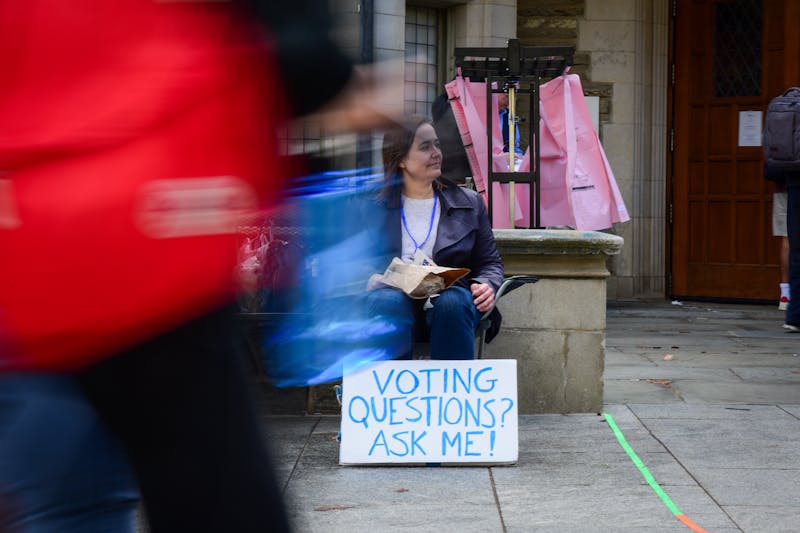In today’s racial climate, which has seen a lot of division, tension and revolt, it always seems difficult to insert the “Asian” voice in the dialogue — partly because Asian is an umbrella term. Sometimes, racial issues seem like isolated incidents when they happen to a segment of the Asian community. Yet, this fact also raises the question for me of why Penn’s Asian community finds difficulty in creating a cohesion out of its diverse cultural groups, especially during times of high tension.
Penn’s pan–Asian community is broad, to say the least. Umbrella organizations with long acronyms subsume smaller, individual groups that represent every faction of Asian identity you could find. For instance, APSC (Asian Pacific Student Coalition) is a student-run organization that coordinates and represents smaller student cultural groups like CSA and VSA, allowing a greater unity to be formed out of many cultural bubbles. The diversity of groups is impressive, and needed, yet how can a community that strives for cohesion appear so fractured?
Whenever a racially–motivated attack happens within the Asian community — such as at last year’s VSA Spring Fling barbecue — there is little sense of coming together. One group’s issues seems isolated from that of another’s group. There exists no strong movement that tries to unite the pan–Asian identity in times of strife, because it has always been culturally diverse by nature.
With all these communities built around us, we somehow still struggle to solidify the Pan-Asian collective. In a community where there are multiple dimensions to what “Asian” means, finding the middle ground between a synthesis of cultures while appreciating their diversities is challenging.
One Asian sophomore from California meditates on the cultural divide between Asians present already in the United States. He begins by noting that divisions already exist between the East Coast and West Coast: “It’s a different culture already because East Coast Asians are mostly mainland China, and West Coast are mostly Vietnamese immigrants.” He then acknowledges the pressures to fit into a label: “At Penn … I’m forced to represent my culture. People ask, ‘You know the best Dim Sum places right?’ It’s forced me to become a lot more aware of myself as a culture. Being Chinese only became important when being in an environment where that was my sole identifier.”
In fact, there are so many cultural complexities within the community that calling it “Asian” begins to feel like a misnomer. It’s a word that seems to have lost cultural meaning from the moment having monolids became synonymous with being “vaguely Chinese.” Often, Asians from the Middle East and South Asia are excluded from that definition. Moreover, how can an Asian born and raised in the West truly reclaim such a simultaneously flattening and unifying word like “Asian?"
College junior Steven Sun acknowledges that “the way the Penn community talks about it, being Asian is very polarizing.” He stresses further that, “For Asian Americans … we’re slightly more diluted. Getting in touch with our heritage is an obligation a lot of Asian Americans feel. For [international Asians] their identity is not really questioned.”
A half–Vietnamese, half–White student I talked to admits that: “[At Penn], white people would tell me I’m not white, and I take that as meaning I’m not a part of their community. In the Asian community, people will tell me “You’re not Asian,” as though I’m not enough. But I grew up in a predominantly white area, so Asian American meant, since there was so few of us, that there was a shared identity.”
This shared identity comes into question considering how the Asian community is structurally divided at Penn. Having always identified as Asian, I feel a divergence between what my Asian American peers understand of my culture, and what I do of it. As such, I can’t imagine how to properly unify culturally unique groups under the “Asian” umbrella, and how mobilization can work to bring out a wholly united “Asian” voice.
Somehow the Asian community tries to unite itself by gravitating to generically Asian cultural markers and activities. From my experience, activities like Chinatown runs or bubble tea hangouts act as artificial links that provide the semblance of authenticity. Inevitably, this creates a bubble justifying what is “authentically” Asian and what isn’t; soon enough, anyone who once thought “Asian” could apply to them would feel excluded if they grew up with a different version of the Asian experience.
This is more than just an identity crisis, it’s the real challenge that comes with diversity — that balance between cohesion and appreciation of our differences. Not until we acknowledge that there is a fractured, polarizing component to the Asian identity at Penn can we really learn to create a more united, yet diverse, community of Asians.
AMANDA REID is a College sophomore from Ho Chi Minh City, Vietnam, studying cinema studies & English. Her email address is amreid@sas.upenn.edu. “Reid About It!” usually appears every other Tuesday.
The Daily Pennsylvanian is an independent, student-run newspaper. Please consider making a donation to support the coverage that shapes the University. Your generosity ensures a future of strong journalism at Penn.
DonatePlease note All comments are eligible for publication in The Daily Pennsylvanian.








